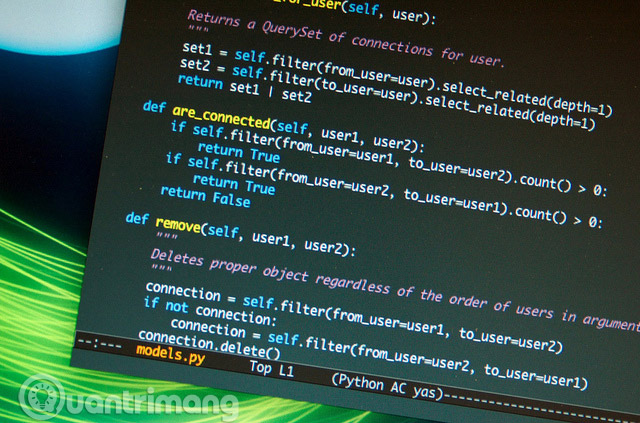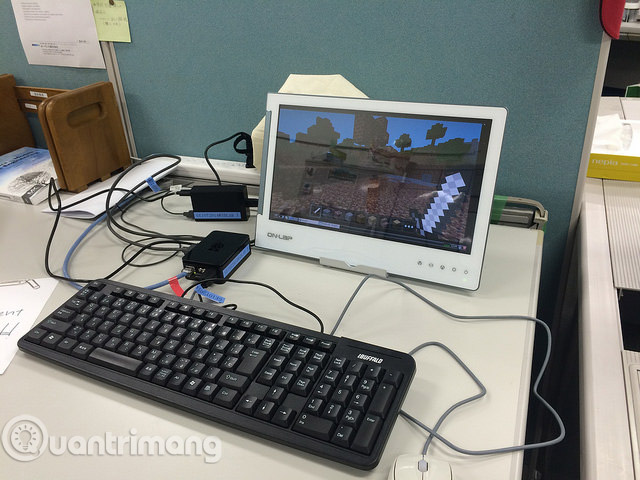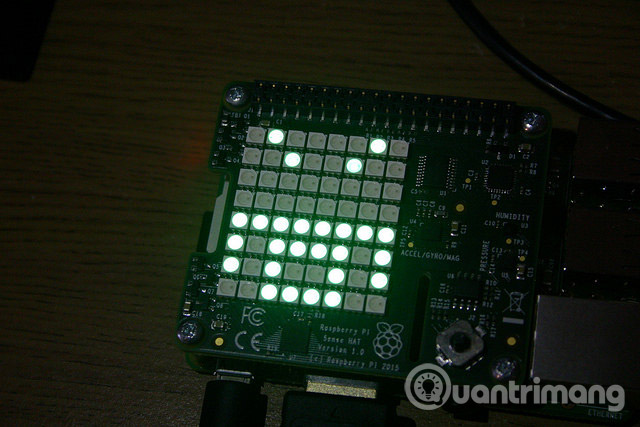5 interesting activities to learn about programming on Raspberry Pi for children
One of the best gifts you can give your children is to teach them about computer programming. This is not only an entertaining, intellectual game, but also a solid guarantee for future careers, in an industry with competitive salaries and promises to provide stable work.
One of the best tools to teach kids programming is the Raspberry Pi. With only $ 30, most parents can buy this computer for their children. Using integrated GPIO (General Purpose Input / Output), parents can attach electrical components and build their own physical computer devices. Because you don't use Raspberry Pi as your main computer, your child can test and play with it, without fear of causing damage to your system or documents.
But if you are not a programmer and do not know about Python, then you may not know how to guide your child. Do not worry. Here are 5 simple activities to teach your child about programming with Raspberry Pi.
5 interesting activities to learn about programming on Raspberry Pi for children
- Join Raspberry Jam
- Teach children about Scratch
- Learn Python
- Play with Minecraft Pi
- Learn about electronics with Sense HAT
Join Raspberry Jam
Raspberry Jam is the premier community gathering for everyone to learn (and teach) about Raspberry Pi. Although many technology events are only for adults, Raspberry Jam tends to be open to technology enthusiasts of all ages. Every Raspberry Jam has a lot of kids and teenagers attending.

Most meetings involve Raspberry Pi held in the UK, the few remaining in the US, as well as in Canada, India and Ukraine.
What makes these events so great is that they are often led by experienced people who use and build Raspberry Pi. Your child will not be left without guidance. They will receive advice and practical guidance. They will have the opportunity to learn how to program and how to use the various Linux operating systems commonly used on Pi.
- 10 operating systems you can run with Raspberry Pi
In addition, there will definitely be many other young people there, so this promises to be an interesting and social event for all ages.
Teach children about Scratch
A lot of kids are learning how to program through Scratch. This project from the Massachusetts Institute of Technology takes the most basic concepts of code, turning it into a user-friendly drag and drop experience.

Things like conditions (where you perform a task, if something meets a criterion) and repetition (where you repeat something with a certain number of times) is turned into puzzle pieces Colorful picture. The results of the code are displayed in the form of an animation or a simple game.
If your child doesn't love programming very much, that's not a problem. Simply take the code, turn it into something beautiful, intuitive, and ultimately make it the least scary for beginners. Teaching children the basic programming logic will not be the same.
If you're looking for a good place to start with Scratch, see the Raspberry Pi Foundation website (https://projects.raspberrypi.org/en/), which has published some Scratch projects to download. These projects tend to be appropriate for each age and come with clear, concise documentation.
Learn Python
The next step from Scratch is Python. Python was first developed in 1991 by Dutch programmer Guido Van Rossum, as a simple educational programming language. Unlike other programming languages, Python is designed to be easy to read and write. It has an interpreter (this is what actually runs the code), comes with strict rules, forcing people to write 'clean' code. The end result is Python has great success not only in education, but also in industry.

Right now, every Raspberry Pi comes with Python, so you don't need to download anything.
Thanks in large part to the success of the Raspberry Pi, there are a lot of Python learning materials for children and teenagers. If you want to study through a book, No Starch Press has Python for Kids: A Playful Introduction to Programming by Jason R. Biggs. One of the strengths of this book is that it is written in a simple, accessible style and has enough illustrations to make children feel excited.
YouTube has a lot of child-friendly video tutorials about Python, but no videos are really excellent. Many videos are not really good, or are simply not suitable for teaching children about programming.
However, the Raspberry Pi platform has released a number of Python projects, providing a new perspective on this programming language.
Play with Minecraft Pi
Minecraft is basically a digital Lego. Instead of building a castle or spacecraft with plastic bricks, all actions are performed on the computer screen with virtual bricks. There is no real limit to what you can build with it. Your creation can be large or small, depending on what you want. They can be simple or complex, if your imagination allows.

There is an online community sharing their own inventions, scattered across Twitter, Reddit and YouTube. There are even some Minecraft vloggers with hundreds of thousands of subscribers.
In February 2013, Mojang released a specially designed version for Raspberry Pi. In addition to being free, this is designed to be able to run on the limited hardware of the Raspberry Pi and has API (Application Programming Interface), allowing people to program in Minecraft in Python.
This led to Minecraft being used as a means to teach programming, not only because of the irresistible appeal of Minecraft, but you can also see your results in a familiar virtual world. .
Learn about electronics with Sense HAT
If you want to teach your children about electronics, and contribute to the Internet of Things, a great place to start is with Sense HAT. This additional board for Raspbery Pi retails for £ 23 in the UK, or $ 50 in the US, and can plug into the integrated GPIO slot. It includes an 8 × 8 RGB LED matrix, a 5-button joystick and a range of sensors, including a gyroscope and accelerometer. There is even a Python library, allowing easy access to all the components in Sense HAT.
- The most important programming languages in the Internet of Things era
Basically, this is all you need to build some basic physics computing projects. As with Scratch and Python, the Raspberry Pi platform has published a number of sample projects. They provide a great starting point and illustrate the possibilities of Sense HAT.

When your kids want to learn more complicated things, such as Arduino, you might want to consider 1Sheeld, a product from an Egyptian startup called Integreight. This board allows you to build Internet of Things products, using sensors and radios integrated into standard Android smartphones.
Very few tools can learn about programming more easily than Raspberry Pi. Have you found a great way to use in teaching programming for your child? Let us know about it in the comment section below!
See more:
- 7 great ideas using Raspberry Pi as a server
- 4 ways to set up Raspberry Pi as a media server
- Microsoft plans to bring AI into Raspberry Pi
You should read it
- How to add buttons on the Raspberry Pi machine
- Raspberry Pi Foundation introduces Code Editor, a simple and useful online code editing tool
- Raspberry Pi Zero vs Model A and B, how are they different?
- 7 great ideas using Raspberry Pi as a server
- What is the Raspberry Pi and how is the Raspberry Pi used?
- How to start Raspberry Pi 3 from USB